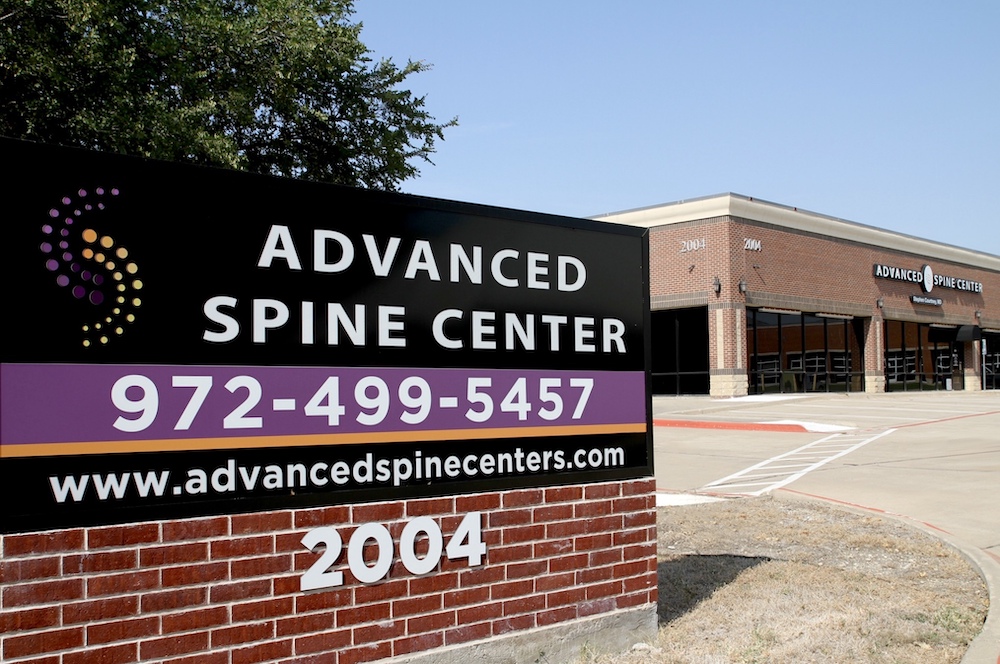Lumbar Microdiscectomy Surgery Frisco, TX
Home > Orthopedic Spine Surgeon in Frisco, TX > Lumbar Microdiscectomy Frisco, TX
Specialties
Lumbar Microdiscectomy Surgery in Frisco, TX
If you have a herniated disc in your lumbar spine, chances are you have symptoms like lower back pain, radiating leg pain, or weakness in the legs. Maybe you’ve tried nonsurgical treatment over and over, but nothing seems to help your pain. Luckily, the Advanced Spine Center offers lumbar microdiscectomy in Frisco, TX.
Dr. Courtney is a Frisco orthopedic surgeon specializing in spine surgery. He has over 20 years of experience helping patients identify the source of their pain and develop customized treatment plans to target their needs. To schedule a consultation with us, please call 972-499-5457 today.
What Is Lumbar Microdiscectomy Surgery?
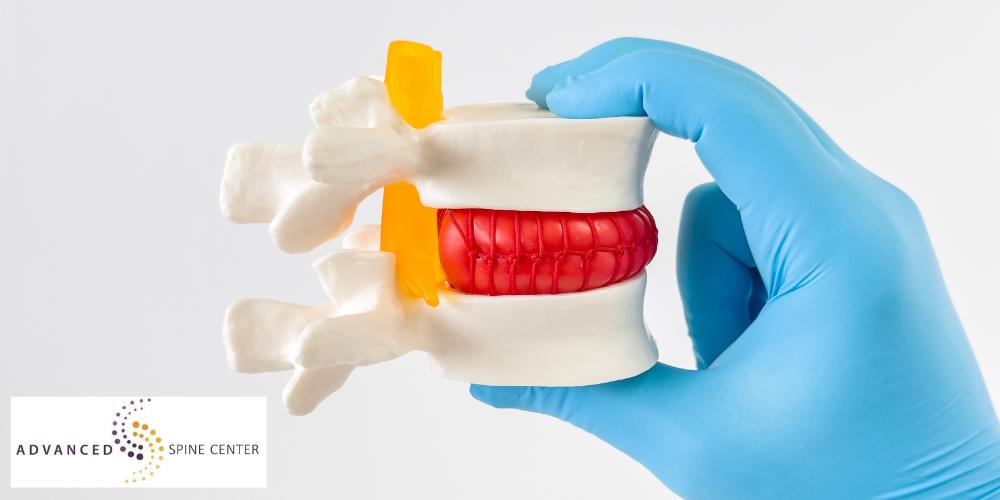
Lumbar microdiscectomy, also known as microdecompression surgery, is a surgical procedure designed to alleviate pain and neurological symptoms associated with lumbar disc herniation. It is a spine surgery mainly performed to relieve pressure on a compressed nerve root.
The lumbar spine consists of five vertebrae, labeled L1 through L5, and intervertebral discs that act as cushions between these vertebrae. When one of these discs, typically in the lower lumbar region (L4-L5 or L5-S1), becomes damaged or ruptures, it can press against nearby nerves, causing pain, numbness, weakness, and other discomforting symptoms.
Microdiscectomy is performed to remove the portion of the herniated disc that is pressing on the nerve root. The goal is to relieve nerve compression and alleviate symptoms while preserving as much healthy disc material as possible. This procedure is considered minimally invasive because it involves smaller incisions and less disruption to the surrounding tissues compared to traditional open surgery.
Lumbar Discectomy vs. Lumbar Microdiscectomy
Lumbar discectomy and lumbar microdiscectomy are two related surgical procedures used to treat a herniated lumbar disc, but they differ in their approach and invasiveness.
Lumbar Discectomy: A lumbar discectomy is a broader term that encompasses various techniques for removing all or part of a damaged disc. It can be done through an open incision, and it may involve removing more of the disc material and sometimes fusing adjacent vertebrae. This procedure is more invasive and may have a longer recovery period.
Lumbar Microdiscectomy: Lumbar microdiscectomy is a specific type of lumbar discectomy that focuses on minimal tissue disruption. It is performed through a small incision using specialized instruments and a microscope or endoscope for visualization. The goal is to remove the herniated portion of the disc while preserving the structural integrity of the spine as much as possible.
In summary, lumbar microdiscectomy is a minimally invasive subset of lumbar discectomy with the primary aim of preserving spinal stability and reducing tissue trauma.
Lumbar Spinal Fusion vs. Lumbar Microdiscectomy
Lumbar spinal fusion and lumbar microdiscectomy are distinct surgical procedures with different objectives.
Lumbar Spinal Fusion: Lumbar spinal fusion is a surgical procedure that aims to stabilize the spine by fusing two or more adjacent vertebrae together. It is typically recommended for conditions such as severe disc degeneration, spinal instability, or deformities. Fusion eliminates motion between the fused vertebrae but can limit flexibility. This procedure is more invasive and involves a longer recovery period compared to microdiscectomy.
Lumbar Microdiscectomy: As mentioned earlier, lumbar microdiscectomy is a minimally invasive procedure focused on relieving nerve root compression caused by herniated discs. It aims to preserve spinal mobility and is not intended to address spinal instability or deformities.
The choice between lumbar spinal fusion and microdiscectomy depends on the specific diagnosis and individual patient factors. In many cases, microdiscectomy is preferred when the primary concern is nerve compression without significant spinal instability.
Lumbar Injections vs. Lumbar Microdiscectomy
Before opting for surgical intervention, patients with lumbar disc herniation may explore non-surgical treatments, including lumbar injections. These injections are used for pain management and reducing inflammation within the spinal canal.
Lumbar Injections: Lumbar injections, such as epidural steroid injections or nerve root blocks, involve the injection of anti-inflammatory medications or anesthetics into the affected area to provide temporary pain relief. While these injections can be effective in managing symptoms, their effects are often temporary, and they do not address the underlying cause of the herniated disc.
Lumbar Microdiscectomy: Lumbar microdiscectomy, on the other hand, directly addresses the herniated disc by removing the portion that is compressing the nerve root. It is considered a more definitive treatment option when conservative measures and injections fail to provide lasting relief.
The choice between lumbar injections and microdiscectomy depends on the severity of symptoms and the patient’s response to non-surgical treatments. Surgery is typically recommended when there is significant nerve compression or when conservative treatments are ineffective.
Why Do We Recommend Lumbar Microdiscectomy?
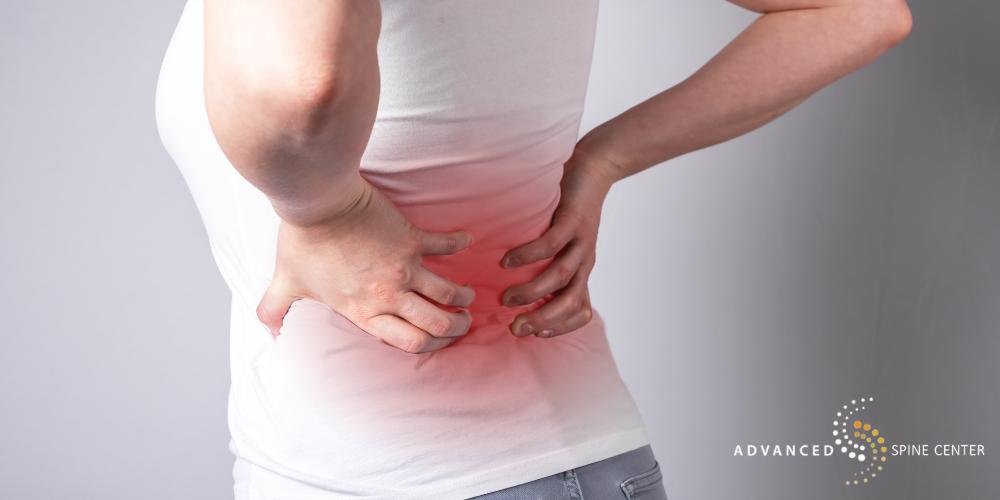
Lumbar microdiscectomy is recommended for several compelling reasons. Generally, we reserve surgical treatment for compressed spinal nerves for patients who have not benefited from conservative treatments, such as physical therapy or injections.
Effective relief: Microdiscectomy is highly effective in relieving lumbar spine pain and neurological symptoms caused by lumbar disc herniation. By decompressing the affected nerve root, it can provide rapid and lasting relief for severe pain.
Minimally invasive: This procedure is minimally invasive, which means it involves smaller incisions and less tissue disruption compared to traditional open surgery. This results in less postoperative pain, a shorter hospital stay, and a quicker return to daily activities.
Preservation of spinal mobility: Unlike spinal fusion, microdiscectomy aims to preserve spinal mobility and flexibility. Patients can maintain a more natural range of motion in their spine after the procedure.
High success rate: Lumbar microdiscectomy has a high success rate, with most patients experiencing significant improvement in their symptoms.
Prevention of nerve damage: By addressing the herniated disc directly, microdiscectomy can prevent long-term nerve damage and its associated complications.
What Conditions Can Lumbar Microdiscectomy Treat?
Lumbar microdiscectomy is primarily used to treat conditions related to lumbar disc herniation. The following are common conditions that can be addressed through this surgical procedure.
- Lumbar disk herniation: The most common indication for lumbar microdiscectomy is a herniated or bulging disc in the lumbar spine. When an intervertebral disc protrudes and compresses a nerve root, it can lead to pain, numbness, tingling, and weakness in the lower back and legs.
- Sciatica: Lumbar microdiscectomy is effective in treating sciatica, a condition characterized by pain radiating down the sciatic nerve, often caused by lumbar disc compression of the nerve root.
- Foraminal stenosis: Foraminal stenosis occurs when the openings (foramina) through which spinal nerves exit the spine become narrowed, leading to nerve compression. Microdiscectomy can alleviate this compression.
- Recurrent disc herniation: In some cases, a previously herniated disc may re-herniate after conservative treatment or a prior surgery. Lumbar microdiscectomy can be used to address recurrent herniations.
Preparation for Lumbar Discectomy Surgery
Before undergoing lumbar microdiscectomy surgery, patients will go through a comprehensive preparation process. Here are the key steps involved.
- Medical evaluation: Your healthcare provider will conduct a thorough medical evaluation, which may include a physical examination, imaging tests (such as MRI or CT scans), and a review of your medical history.
- Discussion of risks and benefits: Your spine surgeon will explain the risks and benefits of the procedure, as well as alternative treatment options. This is an opportunity to ask questions and address any concerns.
- Medication review: Your surgeon will review your current medications and may ask you to stop certain medications, such as blood thinners, in the days leading up to the surgery.
- Fasting: You will be instructed to fast for a specific period before the surgery, usually starting the night before. This is to ensure an empty stomach during the procedure.
- Smoking cessation: If you smoke, your surgeon may recommend quitting or reducing smoking prior to surgery. Smoking can impair the body’s ability to heal.
- Home preparation: Arrange for someone to drive you home after the surgery and assist you with daily activities during the initial recovery period. Make necessary adjustments to your home environment for comfort and safety.
- Follow preoperative instructions: Follow any specific preoperative instructions provided by your spine surgeons or the surgical team. This may include guidelines on showering with a special antibacterial soap and not eating or drinking after a certain time.
What Is the Lumbar Microdiscectomy Procedure Like?
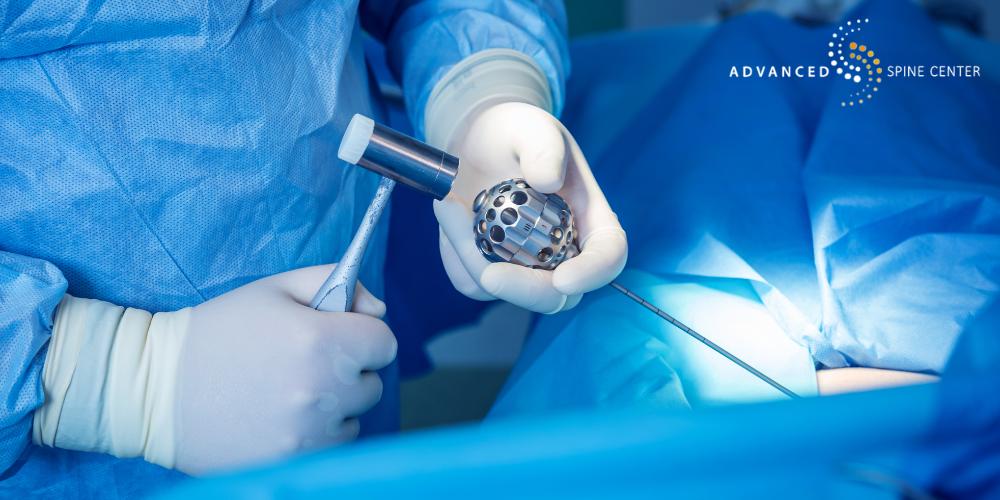
Lumbar microdiscectomy is a carefully planned surgical procedure that typically follows a step-by-step process and uses minimally invasive techniques.
- Anesthesia: You will be administered anesthesia to ensure you are comfortable and pain-free during the surgery. The anesthesia options may include general anesthesia or local anesthesia with sedation, depending on your specific case and surgeon’s preference.
- Incision: The surgeon makes a small skin incision, typically less than an inch in length, in the lower back over the affected disc. The small incision is made to access the spine and the herniated disc.
- Tissue dissection: Specialized instruments and a microscope or endoscope are used to carefully dissect and move aside the muscles and tissues surrounding the spine. This minimizes damage to the surrounding structures.
- Nerve root identification: Using the microscope or endoscope for enhanced visualization, the surgeon identifies the compressed nerve root and the herniated portion of the disc.
- Herniated disc removal: The surgeon removes the herniated disc material that is pressing on the nerve root. This is a precise and delicate process to avoid damaging healthy disc material or nearby structures.
- Closure: Once the herniated disc material is removed, the incision is closed with sutures or surgical staples. In some cases, no sutures may be required, and skin glue is used for closure.
- Recovery: You will be carefully monitored as you wake up from anesthesia. Depending on the surgical facility, you may be discharged the same day or kept overnight for observation.
- Postoperative care: Following surgery, you will receive instructions on postoperative care, including restrictions on activities, medication management, and how to care for the surgical incision.
Surgical Approaches for Lumbar Microdiscectomy
There are two primary surgical approaches for performing lumbar microdiscectomy surgery: percutaneous endoscopic lumbar discectomy (PELD) and tubular microdiscectomy. Both approaches can treat nerve compression caused by a herniated disc. Each approach has its advantages, and the choice depends on the surgeon’s expertise and the patient’s specific condition.
Percutaneous Endoscopic Lumbar Discectomy (PELD)
Percutaneous endoscopic microdiscectomy is a minimally invasive technique that utilizes an endoscope to access and treat the herniated disc. It is also known as a micro endoscopic discectomy. It utilizes minimally invasive discectomy techniques to treat spinal nerve compression. The main steps of PELD include the following.
- The surgeon makes a small incision, typically less than half an inch in size.
- An endoscope, a thin tube with a camera and light source, is inserted through the incision.
- The surgeon guides the endoscope to the site of the herniated disc using real-time imaging.
- Surgical instruments are inserted through the endoscope to remove the herniated disc material.
- The procedure is performed with minimal disruption to surrounding tissues.
PELD offers several advantages, including smaller incisions, less tissue trauma, and potentially faster recovery. It is often recommended for patients with contained disc herniations.
Tubular Microdiscectomy
Tubular microdiscectomy is another minimally invasive lumbar disc surgery approach that utilizes a tubular retractor system to access and treat the herniated disc. The typical steps of a tubular microdiscectomy are as follows.
- A small incision is made, typically less than an inch in size.
- A tubular retractor is inserted through the incision to create a narrow tunnel to the affected disc.
- Surgical instruments and a microscope are used to perform the discectomy through the tubular retractor.
- The surgeon removes the herniated disc tissue while preserving as much healthy disc material as possible. This relieves compression on the spinal nerve root.
Tubular microdiscectomy provides excellent visualization and precision while minimizing tissue disruption. It is suitable for various types of disc herniations and allows for a faster recovery compared to traditional open surgery.
What Is Recovery Like After Microdiscectomy?

Recovery after lumbar microdiscectomy is a crucial phase of the treatment process for a spine patient. Understanding what to expect during the recovery period can help you prepare and make a smoother transition back to your daily activities.
Immediate Postoperative Period
Depending on the surgical facility and your specific case, you may be discharged on the same day of spine surgery or kept overnight for observation.
You may experience some pain and discomfort at the surgical site. Your healthcare team will provide pain medicines to manage any postoperative pain.
It’s important to begin moving and walking as soon as possible after surgery, with assistance if needed. Early mobility helps prevent complications such as blood clots.
First Few Weeks
Your surgeon will provide specific instructions on activity restrictions, which may include avoiding bending, lifting heavy objects, or strenuous activities. These restrictions are typically in place for the first few weeks.
Keep the surgical incision clean and dry. Follow your surgeon’s guidelines for caring for the incision, which may include avoiding baths and swimming until it is fully healed.
Continue taking prescribed medications as directed, including any pain medications and any medications to prevent infection or blood clots.
Recovery Progress
In some cases, your surgeon may recommend physical therapy to help you regain strength and flexibility in your lower back and improve your overall mobility.
The timeline for returning to normal activities varies from patient to patient. Some individuals may resume light activities within a few weeks, while others may take several months to fully recover.
Attend all scheduled follow-up appointments with your surgeon to monitor your progress and address any concerns or questions.
Long-Term Recovery
Over the course of several weeks to months, you should experience gradual improvement in your symptoms and overall function. Nerve healing can take time.
To prevent future disc herniations, maintain a healthy lifestyle that includes regular exercise, proper body mechanics, and weight management.
How Long Does It Take to Recover from Lumbar Microdiscectomy?
The duration of recovery from lumbar microdiscectomy can vary from one individual to another and depends on several factors, including the patient’s overall health, the extent of the herniation, and the surgical approach used.
Most patients are up and walking shortly after spinal surgery. Hospital stays are typically brief, often lasting just a few hours or overnight. During the first few weeks, you should gradually increase your activity level while adhering to any restrictions set by your surgeon. You may still experience some discomfort.
Around 4 to 6 weeks after surgery, many patients can return to light, non-strenuous activities. However, heavy lifting and more demanding physical tasks should still be avoided.
Around 2 to 3 months after surgery, most patients experience significant improvement in their symptoms within this timeframe. Physical therapy, if prescribed, may continue to help with strength and flexibility.
Full recovery can take several months, and some patients may continue to experience improvements in nerve-related symptoms for up to a year after surgery. It’s essential to maintain a healthy lifestyle to prevent future issues.
What Are the Potential Complications and Risks of Microdiscectomy?
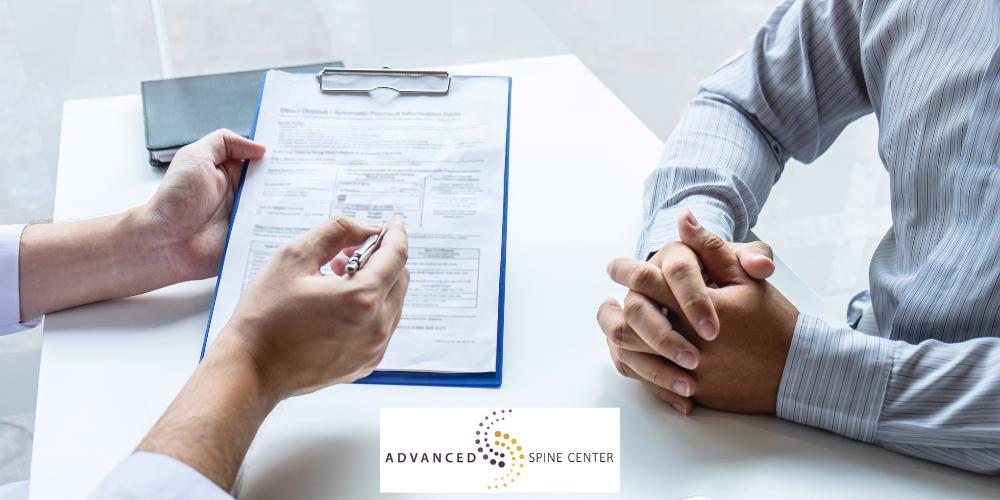
While lumbar microdiscectomy is considered a safe and effective procedure, like any surgery, it carries certain risks and potential complications. It’s crucial to be aware of these risks and discuss them with your surgeon before proceeding with the surgery. Common risks and complications include the following.
- Infection
- Excessive bleeding
- Nerve injury
- Spinal cord injury
- Dural tear
- Recurrent disc herniations
- General anesthesia complications
- Scar tissue formation
- Blood clots
- Failed back surgery syndrome
Call the Advanced Spine Center for Lumbar Microdiscectomy in Frisco, TX
Lumbar microdiscectomy is a valuable surgical option for individuals suffering from the pain and discomfort associated with lumbar disc herniation. This minimally invasive surgery offers effective relief while preserving spinal mobility. If you suffer from herniated discs and pain from compressed nerves, microdiscectomy may be a valid option for you.
To schedule an appointment with the Advanced Spine Center about your situation, please call 972-499-5457 today.
